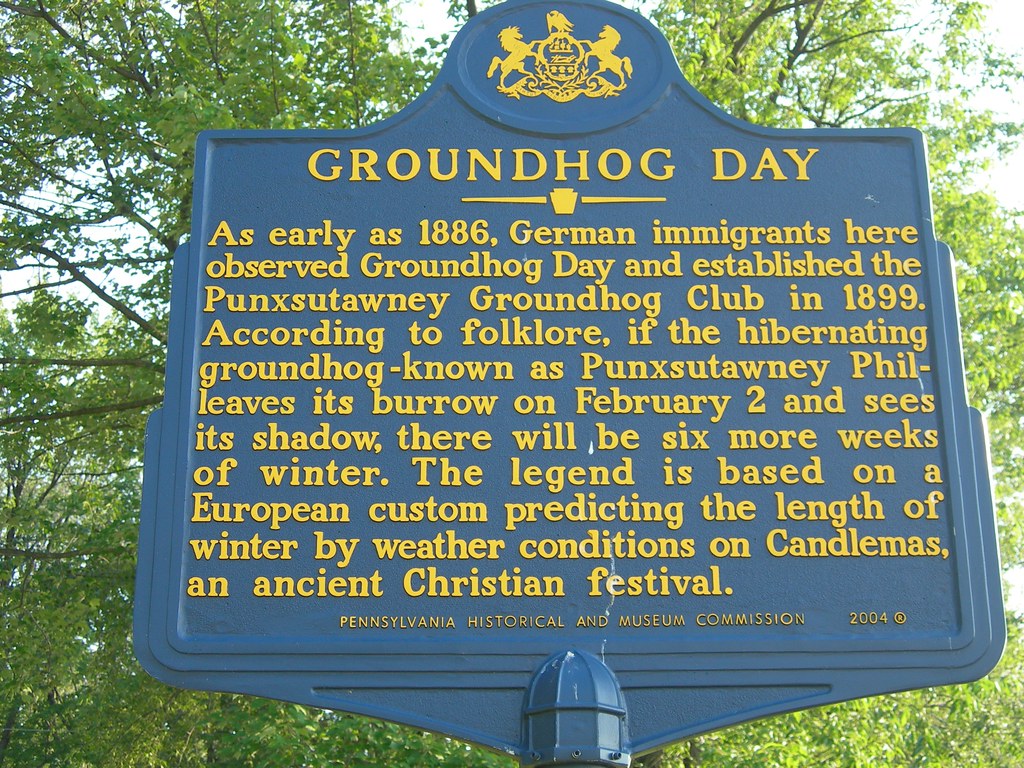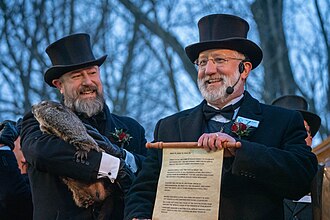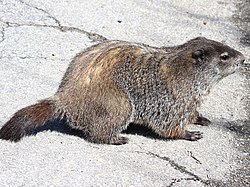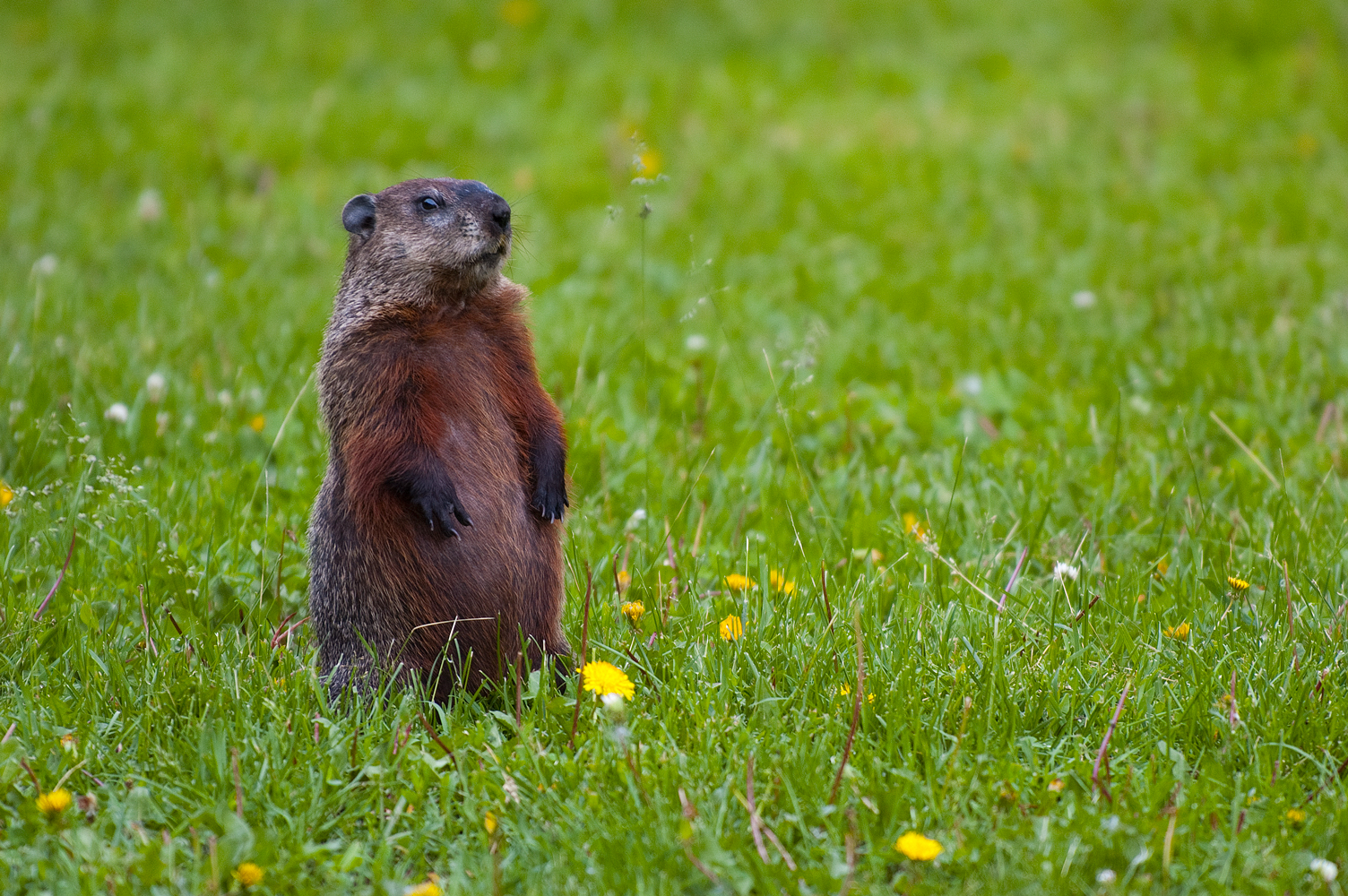

Groundhog Day
 |
|
 | VIRTUAL DISPLAYS: Groundhog Day |
| Groundhog Day |
 |
"Groundhog Day, in the United States and Canada, on which the emergence of the groundhog (woodchuck) from its burrow is said to foretell the weather for the following six weeks. The beginning of February, which falls roughly halfway between the winter solstice and the spring equinox, has long been a significant time of the year in many cultures. Among the Celts, for example, it was the time of Imbolc, observed in anticipation of the birth of farm animals and the planting of crops, and February 2 is also the date of the Christian festival of Candlemas, also called the feast of the Purification of the Blessed Virgin. During the Middle Ages there arose the belief that animals such as the badger and the bear interrupted their hibernation to appear on this day. If the day was sunny and the animal saw its shadow, six more weeks of winter weather remained. If, however, the day was cloudy, it was a sign that the weather during the following weeks would be mild, leading to an early spring. German immigrants to the United States carried the legend with them, and in Pennsylvania the groundhog came to be substituted for the badger," - Encyclopedia Britannica |
|
 Punxsutawney Groundhog Club |
 Ohio's Buckeye Chuck |
 How Accurate is Phil? |
1 West Lakeside Avenue, FL4 • Cleveland, Ohio 44113-1078 • Email: lawlib@clelaw.lib.oh.us • Phone: (216) 861-5070 • Fax: (216) 861-1606
| Created on: February 05, 2025 - |
|
Copyright © 2025 The
Cleveland Law Library |